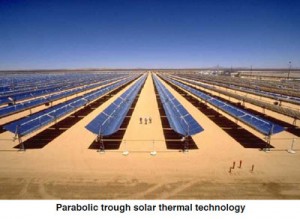California solar power plans are breaking through red tape


Solar power may be on the rise in California with the state Public Utilities Commission's (CPUC) approval of several power purchase agreements on Thursday. Meanwhile, a host of other projects that would significantly increase that state's solar power production are awaiting approval from state and Federal agencies.
CPUC is permitting Pacific Gas and Electric Company (PG&E) to purchase energy for a 20-year period from three solar photovoltaic facilities that are owned by Eurus Energy America, as well as a 25-year deal with Genesis Solar. Southern California Edison was granted approval for a power purchase agreement with Solar Partners I, a private energy company that is based in Oakland, CA.
Eurus Energy is expected to add its capacity to PG&E's grid beginning in mid-2011, according to CPUC. An estimated 77 gigawatt-hours (GWh) of energy will be delivered annually, and facilities will be located near Fresno, CA.
In 2013, PG&E will purchase 524 GWh of renewable energy annual from Genesis Solar, an affiliate of NextEra Energy Resources. The facility will be built in Riverside County, CA.
The United States Bureau of Land Management (BLM) must approve projects that are developed on federal land. CNET reports that BLM today announced its final environmental impact statement for Chevron Energy Solutions' Lucerne Valley Solar Project, which would produce 1,000 megawatts worth of generating capacity.
Over nine solar projects are awaiting fast-track approvals from BLM; they would add over 4,500 megawatts in generating capacity to the state's energy mix. That is enough energy to power 3.8 million homes, according to federal estimates cited in CNET's report.
The fast-track approval process was created to determine whether projects had advanced far enough to qualify for funding from the American Recovery and Reinvestment Act of 2009.California has mandated that utilities generate 20 percent of their electricity from renewable energy sources before the end of the year.
This post was originally published on Smartplanet.com